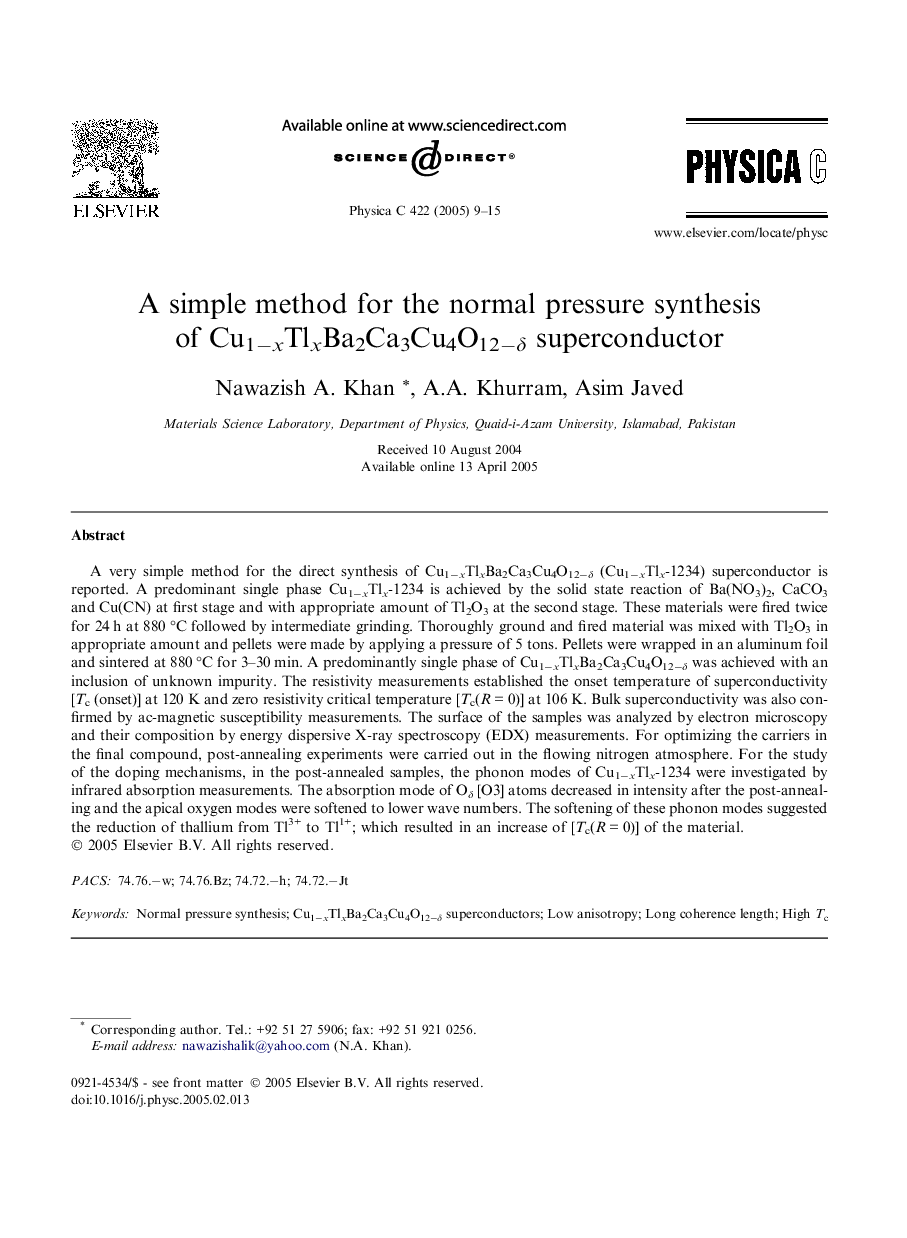| Article ID | Journal | Published Year | Pages | File Type |
|---|---|---|---|---|
| 9841867 | Physica C: Superconductivity and its Applications | 2005 | 7 Pages |
Abstract
A very simple method for the direct synthesis of Cu1âxTlxBa2Ca3Cu4O12âδ (Cu1âxTlx-1234) superconductor is reported. A predominant single phase Cu1âxTlx-1234 is achieved by the solid state reaction of Ba(NO3)2, CaCO3 and Cu(CN) at first stage and with appropriate amount of Tl2O3 at the second stage. These materials were fired twice for 24 h at 880 °C followed by intermediate grinding. Thoroughly ground and fired material was mixed with Tl2O3 in appropriate amount and pellets were made by applying a pressure of 5 tons. Pellets were wrapped in an aluminum foil and sintered at 880 °C for 3-30 min. A predominantly single phase of Cu1âxTlxBa2Ca3Cu4O12âδ was achieved with an inclusion of unknown impurity. The resistivity measurements established the onset temperature of superconductivity [Tc (onset)] at 120 K and zero resistivity critical temperature [Tc(R = 0)] at 106 K. Bulk superconductivity was also confirmed by ac-magnetic susceptibility measurements. The surface of the samples was analyzed by electron microscopy and their composition by energy dispersive X-ray spectroscopy (EDX) measurements. For optimizing the carriers in the final compound, post-annealing experiments were carried out in the flowing nitrogen atmosphere. For the study of the doping mechanisms, in the post-annealed samples, the phonon modes of Cu1âxTlx-1234 were investigated by infrared absorption measurements. The absorption mode of Oδ [O3] atoms decreased in intensity after the post-annealing and the apical oxygen modes were softened to lower wave numbers. The softening of these phonon modes suggested the reduction of thallium from Tl3+ to Tl1+; which resulted in an increase of [Tc(R = 0)] of the material.
Keywords
Related Topics
Physical Sciences and Engineering
Physics and Astronomy
Condensed Matter Physics
Authors
Nawazish A. Khan, A.A. Khurram, Asim Javed,
